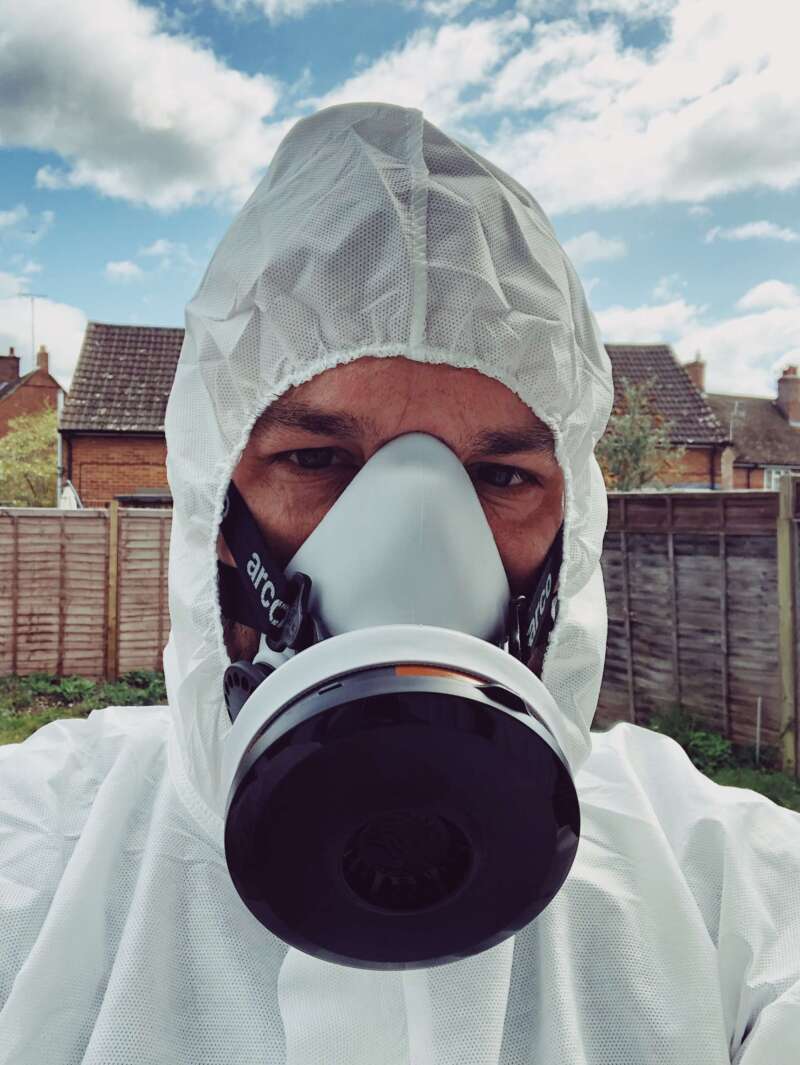
Today is bed bug day! I have to admit, as a pest controller, this is my least favourite pest to treat, because I don’t want to take any home with me by accident and have a bed bug infestation of my own! That is partly why I’m dressed up like a scientist from ET to do today’s treatment. So, what do we know about bed bugs and how do you know if you’ve got them? Despite their general sneakiness, bed bugs do leave signs of their presence:
Firstly, what do they look like? Most people I talk to think that bed bugs are microscopic bugs that you can hardly see. However, that is not the case. Fully grown, they are about the same size, colour and shape as an apple pip. It is after feeding that their bodies swell and become a dark reddish color.
✅ Bites – This is many people’s first indication that something might be off; bed bugs prefer to feed off us when we sleep, thus bites can appear on skin that is exposed during the night. You may have heard that bed bugs bite in a straight line of 3 bites (typically called “breakfast, lunch, and dinner”). True, this pattern can occur with bed bugs; they may have to bite a second or third time to find the right spot. However, a bed bug may also get a full meal on the first try. Thus, you may have bed bugs without the “breakfast, lunch, dinner” pattern appearing.
✅ Bloodstains on bed sheets – Bed bugs are attracted to us for three reasons: our body heat, the carbon dioxide we exhale, and our blood. In fact, bed bugs rely on blood as their main food source, which is why they bite us. A tell tale sign of a bed bug infestation is waking up to see little red stains on your bedsheets and pyjamas. This is caused by one of two things: either from rolling onto some bed bugs and squashing them in your sleep, or it’s residue from their feeding on you. We know this isn’t a pleasant image to have, but it’s important you recognise this sign if you ever come across it.
✅ Bed bug skins or moults – During their lifecycle bed bugs shed their skins as they grow from nymph to fully grown adult. During the early stages of a bed bug infestation very few if any skins will be visible. As a bed bug infestation grows shed skins will start to become visible and the exoskeletons are shed and left behind. Many people wonder what a bed bug shell looks like and in most cases, it looks just like the bed bug but without the body on the inside. Many shells are undamaged, and it appears as though the nymph magically disappeared from its exoskeleton.
✅ Faecal Spots – The digested blood in the gut of a bed bug is deposited as semi-liquid, black faeces. As the faeces dry, it leaves behind a black, slightly raised spot. You often will find large numbers of faecal spots in bed bug harbourage sites such as along seams of mattresses. Faecal spots are useful for pinpointing bed bug activity areas and potential treatment sites.
If you have any of the signs above and think you may have bed bugs, give Mission Pest Control a call today and we’ll come and take a look so that we can recommend a course of action.
????01793 379333
???? hello@missionpestcontrol.co.uk
⌨️ www.missionpestcontrol.co.uk

